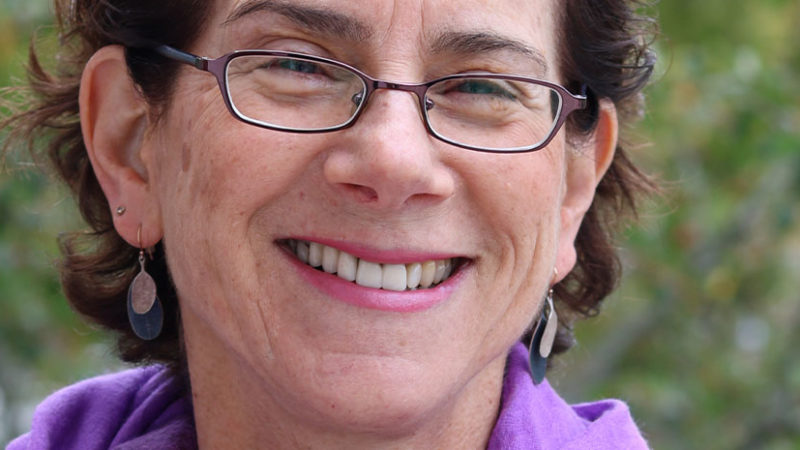-
E117: The Real Work: Letting Go from Within
Michael Singer — October 2, 2025
True spirituality isn’t about mystical experiences or lofty ideals—it’s about honestly facing...
-
Once More: Reflections on Reincarnation and the Gap Between Lives
Tami Simon — September 26, 2025
In this special reflection episode of Insights at the Edge host Tami Simon looks back on her...
-
Honey Tasting Meditation: Build Your Relationship with Sweetness
There is a saying that goes “hurt people hurt people.” I believe this to be true. We have been...
Written by:
Amy Burtaine, Michelle Cassandra Johnson
-
Many Voices, One Journey
The Sounds True Blog
Insights, reflections, and practices from Sounds True teachers, authors, staff, and more. Have a look—to find some inspiration and wisdom for uplifting your day.
Standing Together, and Stepping Up
Written By:
Tami Simon -
The Michael Singer Podcast
Your Highest Intention: Self-Realization
Michael Singer discusses intention—"perhaps the deepest thing we can talk about"—and the path to self-realization.
This Week:
E116: Doing the Best You Can: The Path to Liberation -
Many Voices, One Journey
The Sounds True Blog
Insights, reflections, and practices from Sounds True teachers, authors, staff, and more. Have a look—to find some inspiration and wisdom for uplifting your day.
Take Your Inner Child on Playdates
Written By:
Megan Sherer
600 Podcasts and Counting...
Subscribe to Insights at the Edge to hear all of Tami's interviews (transcripts available, too!), featuring Eckhart Tolle, Caroline Myss, Tara Brach, Jack Kornfield, Adyashanti, and many more.
Most Recent
Lisa Lahey: Your Immunity to Change and How to Overcom...
Lisa Lahey, EdD, is an author, the codirector of the Minds at Work consulting firm, and a faculty member at Harvard University. She is a featured presenter for the Inner MBA program, a new Sounds True multimedia learning experience that explores how to bring principles of presence and conscious leadership to the business world. In this episode of Insights at the Edge, Tami Simon speaks with Lisa about the inherent difficulty of making large personal changes—especially when they are essential to the advancement of your career. They talk about the inherent human resistance to change and the need to be fully aware of our “inner landscapes.” Lisa explains how much of our resistance to change is rooted in self-protective patterns that need to be reckoned with before we can move forward. Tami and Lisa also discuss how to cultivate skills such as time management and communication, as well as what we can do to regulate work-based anxiety. Finally, Lisa details the three evolutionary steps for creating meaning and shares her hopes for the Inner MBA program.(67 minutes)
Your Body Is Not What You Think: Looking Beyond the Ph...
This model of a multidimensional body applies directly to the theme of the Deep Heart. I would not write about the importance of the heart unless I knew it intimately firsthand and also understood its critical role in psychological healing and spiritual awakening. If there are, as I propose, layers to the heart ranging from the relatively gross, through the refined, to the transcendent, then many of us will be able to directly or indirectly sense this in some way.
One of the easiest ways to sense the emotional and energetic reality of the heart area is to notice what we sense and feel when we fall in love or, conversely, when we lose someone we have loved via death or a painful breakup. Heart openings are intoxicatingly joyful, and heart breaks are extraordinarily painful. Have you ever wondered why this is the case? Are the opening and closing of the heart purely physiological, or might something else be going on? We will explore romantic love in a later chapter, but for now I’ll just acknowledge the central role that the heart area plays in human relationships and in genuine spiritual openings. The majority of popular songs and a large number of our most compelling stories revolve around love found and lost.
In order to explore your heart in any depth, it’s helpful to sense your whole body with as few ideas as possible. Clear the slate—be open to the possibility that your body is not what you think it is. Rather than approaching your body as a familiar solid object made up of skin, bones, muscles, organs, tissues, and cells governed by neural and hormonal networks, I encourage you to approach it differently—as a field of vibration filled with space.
In the next exercise, you will experience the body as a field of vibration. This meditation is inspired by the Vijnanabhairava Tantra, a key experiential text in Kashmiri Tantric Shaivism that was authored over a thousand years ago. It’s a good idea to record this guided meditation on your smartphone, and I recommend pausing between the steps outlined below for at least twenty seconds. Including the pauses, please allow for at least ten minutes in total. Find a quiet place where you won’t be disturbed, sit comfortably, and close your eyes.
BODY SENSING PRACTICE
Sensing the Body as Vibration
Take a few deep breaths and allow your attention to settle down and in.
Feel the weight of your body being held by whatever you are sitting on and let yourself be completely held.
Sense the bottoms of your feet, the tips of your toes, and notice a lively vibration. Imagine it growing stronger, gradually enveloping both feet, and then moving up both legs.
Sense the palms of your hands and the tips of your fingers. Notice a subtle vibration—a sense of aliveness.
Feel it enveloping both hands and slowly spreading up both arms.
Feel this sense of vibrant aliveness growing into your hips and shoulders.
And then into the belly and the chest, including your back.
Sense this lively vibration moving up the neck and into the head, suffusing the mouth, ears, eyes, and brain. Take your time.
Now let go of any focusing and sense your entire body as a diffuse field of lively vibration. Notice that it is difficult to tell exactly where your body ends and where the so-called world begins. Allow this sense of vibration to extend out into space in all directions: front … back … left … right … up … and down.
Rest in and as this expansive sense of vibrant spaciousness as long as you like.
Journey into the depths of your own heart with Dr. John J. Prendergast’s guide, The Deep Heart: Our Portal to Presence.
Lance Allred: The New Alpha Male
Lance Allred is a former NBA player (who was the first legally deaf player in the league), public speaker, and author. With Sounds True, he has published The New Alpha Male: How to Win the Game When the Rules Are Changing. In this episode of Insights at the Edge, Tami Simon speaks with Lance about the experiences he had in professional sports that led him to reevaluate what it means to be a man in contemporary society. Lance explains how his upbringing in a rural, polygamous commune informed his original ideas about masculinity, highlighting the subconscious assumptions about money and power that affect American men’s self-worth. Tami and Lance also discuss the roles of emotional vulnerability and surrender in the lives of modern men. Finally, they talk about the principle of perseverance and the increasingly urgent need for all cultures to reexamine their assumptions and core values.(63 minutes)
Customer Favorites
Exploring Out of Body Experiences
Tami Simon speaks with William Buhlman, an expert in teaching people techniques so they can have an out-of-body experience. For the past six years, he has surveyed more than 16,000 participants in 32 countries about their out-of-body experiences. He is also a regular lecturer at the Monroe Institute. William is the author of the new Sounds True audio learning program, How to Have an Out-Of-Body Experience. William discusses what he calls “spiritual essence”, eliminating the fear of death, multiple energy-bodies, and how to use the knowledge gained from out-of-body experiences. For more information about William Buhlman, visit astralinfo.org. (48 minutes)
Presence Through Movement
Tami Simon speaks with Kim Eng, a counselor, spiritual teacher, and Eckhart Tolle’s life and teaching partner. Kim’s “Presence Through Movement” workshops focus on the integration of mind, body, and spirit. With Sounds True, she has created two Presence Through Movement DVD programs, as well as the audio programs Meditations for a New Earth and Resist Nothing. In this episode, Tami speaks with Kim about what Eckhart Tolle calls the pain-body—an accumulation of the pain and unresolved emotions of our past that can take on a life of its own—and how we can dissolve it through movement. She also spoke about discovering our inner aliveness, and how we can stay present through grief and loss. (51 minutes)
The MindBody Code, Part 2
Lessons from Centenarians
During the process of researching the roots of biocognitive science, neuropsychologist Mario Martinez interviewed dozens of centenarians—people who live healthily past 100. In the second part of their conversation about Mario’s new book, The MindBody Code: How to Change the Beliefs that Limit Your Health, Longevity, and Success, Mario and Tami Simon discussed these centenarians and the four essential beliefs that they all share. They also talked about the different ways that various cultures view aging and how these views impact health. Finally, Mario and Tami spoke on forgiveness and its potential to positively affect our well-being. (61 minutes)




